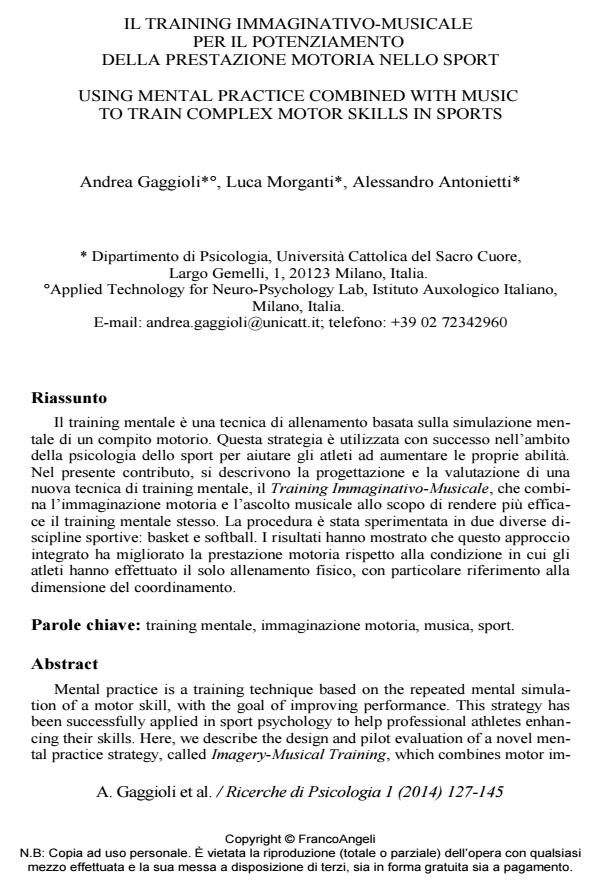Il training immaginativo-musicale per il potenziamento della prestazione motoria nello sport
Titolo Rivista RICERCHE DI PSICOLOGIA
Autori/Curatori Andrea Gaggioli
Anno di pubblicazione 2014 Fascicolo 2014/1
Lingua Italiano Numero pagine 19 P. 127-145 Dimensione file 215 KB
DOI 10.3280/RIP2014-001007
Il DOI è il codice a barre della proprietà intellettuale: per saperne di più
clicca qui
Qui sotto puoi vedere in anteprima la prima pagina di questo articolo.
Se questo articolo ti interessa, lo puoi acquistare (e scaricare in formato pdf) seguendo le facili indicazioni per acquistare il download credit. Acquista Download Credits per scaricare questo Articolo in formato PDF

FrancoAngeli è membro della Publishers International Linking Association, Inc (PILA)associazione indipendente e non profit per facilitare (attraverso i servizi tecnologici implementati da CrossRef.org) l’accesso degli studiosi ai contenuti digitali nelle pubblicazioni professionali e scientifiche
Il training mentale e una tecnica di allenamento basata sulla simulazione mentale di un compito motorio. Questa strategia e utilizzata con successo nell’ambito della psicologia dello sport per aiutare gli atleti ad aumentare le proprie abilita. Nel presente contributo, si descrivono la progettazione e la valutazione di una nuova tecnica di training mentale, il Training Immaginativo-Musicale, che combina l’immaginazione motoria e l’ascolto musicale allo scopo di rendere piu efficace il training mentale stesso. La procedura e stata sperimentata in due diverse discipline sportive: basket e softball. I risultati hanno mostrato che questo approccio integrato ha migliorato la prestazione motoria rispetto alla condizione in cui gli atleti hanno effettuato il solo allenamento fisico, con particolare riferimento alla dimensione del coordinamento.
Parole chiave:Training mentale, immaginazione motoria, musica, sport.
- Understanding the prevalence of mental imagery, music, and their combined use among athletes and coaches Fernando Castellar, Rocco Cavaleri, Steffen A. Herff, in Frontiers in Sports and Active Living 1683432/2025
DOI: 10.3389/fspor.2025.1683432
Andrea Gaggioli, Il training immaginativo-musicale per il potenziamento della prestazione motoria nello sport in "RICERCHE DI PSICOLOGIA " 1/2014, pp 127-145, DOI: 10.3280/RIP2014-001007